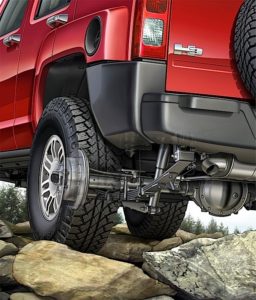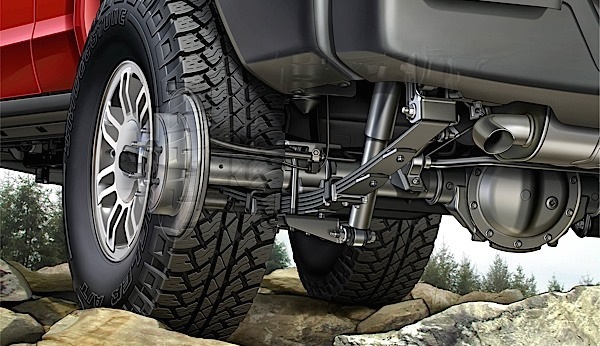Models: 2007-’09 Chevrolet Silverado Classic
2007-’12 Chevrolet Colorado
2007-’18 Chevrolet Silverado
2014-’18 Chevrolet Express
2015-’18 Chevrolet Colorado
1999-2007 GMC Sierra (Classic)
2007-’12 GMC Canyon
2014-’18 GMC Savana
2015-’18 GMC Canyon
Bulletin: #06-03-09-004J

The driver may complain of a squeaking noise coming from the rear of the vehicle. While squeaking is a normal operating characteristic of all weak springs under certain conditions, the frequency and severity of the noise will be present no matter what type of road conditions exist.
The source of noise is debris trapped between the leafs of the spring. To correct the condition, lubricate the rear springs using the following procedure.
Important: It has been found that the application of grease to the rear leaf springs does a better job of preventing noise from reoccurring than replacement of the spring.
Lift the vehicle by the frame.
Inspect the springs for damage. If none is found, proceed to the next step.
Pressure-wash the real leaf spring and remove as much dirt and grit as possible.
Dry the spring with compressed air.
Apply a liberal amount of grease, both underneath and on top of the front and the rear tip insert for the No. 2 and No. 3 leaves. A screwdriver can be used to pry up the leaves. Make sure the screwdriver is wrapped in a rag to prevent damage to the leaves. Use a flat-bladed tool such as a gasket scrapper or a brush to properly distribute the grease at least six inches from each end of the leaf.
Lower the vehicle to the ground and test drive to verify the repair.
The repair is not a lifetime fix. Periodic cleaning and grease re-application may be necessary throughout the life of the truck.
On 1500 (1/2 ton) models built before October 2004, if the above procedure does correct the noise, the problem could be caused by an incorrect dimensioned splay clip. Replace the rear leaf spring assembly to resolve the noise.














